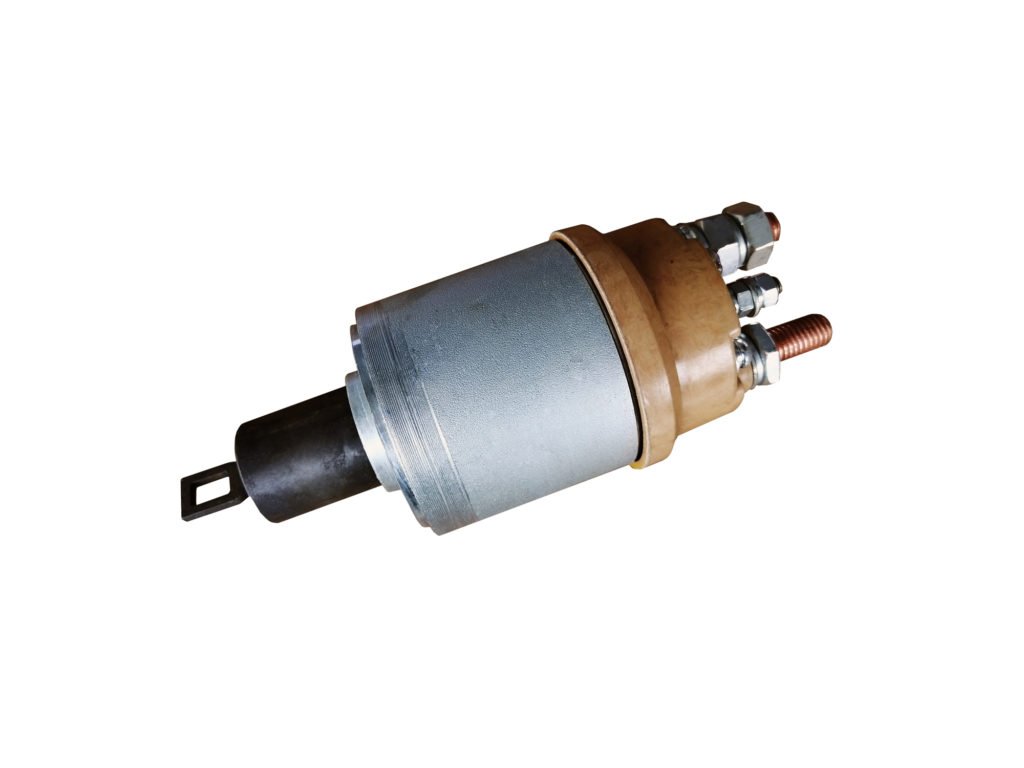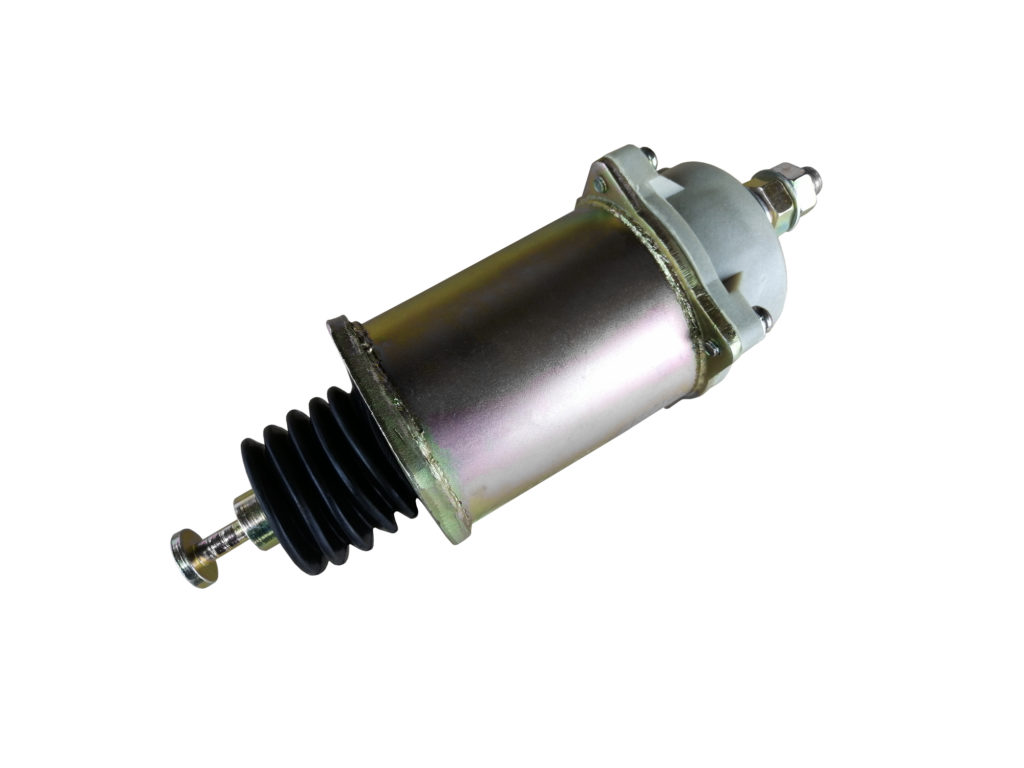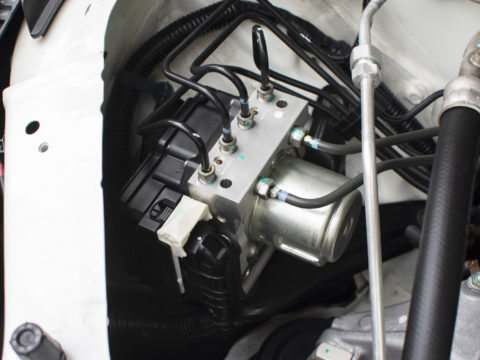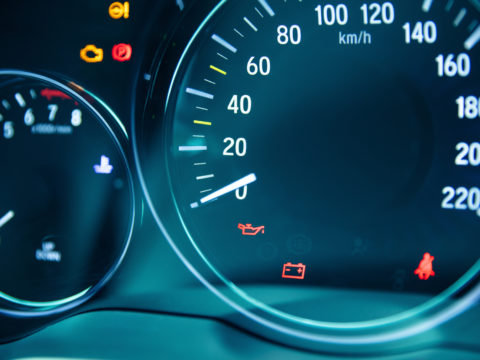Although it is not often a focal point in the vehicle world, the starter relay fuse is a vital part of the functionality of your vehicle’s engine. While it is small, the relay fuse ensures your engine receives the power it needs to start when the key is turned in the ignition.
When a starter relay fuse becomes faulty, it causes your engine to not turn over properly and can even cause engine stalls or a dead battery. Understanding the functionality and common starter relay issues is the best way to ensure your vehicle runs properly.

Contents
What Does a Starter Relay Do?
A starter relay redirects the electrical power from the battery to the starter solenoid. When the starter solenoid receives this power, it activates the starter motor which is what turns over the engine.
In other words, the starter relay relays electrical currents from the battery to the starter solenoid. Without the starter relay, the battery power would not transmit the power necessary to help activate the engine. Without a way to start the engine, you become stranded, and your vehicle serves no purpose.
These three components-starter fuse, starter solenoid, and starter motor-must all work in unison for your vehicle to start properly. Depending on the make and model will determine where the starter relay is located. It is most commonly found under the hood in the fuse box.
What Causes the Starter Relay to Become Faulty?
As with any other vehicle component, the starter relay can become faulty. While it is not a common issue, a faulty starter means that you cannot start your vehicle. This typically happens when the fuse has blown or fails to properly function. Several aspects can cause this to happen including, wiring, dirt or debris, overheating, and age.
- Broken, damaged, or loose wiring – one of the key determinants for a faulty starter relay is lack of current. Your vehicle may act like it wants to start but does not have enough power to turn over the engine. This is likely due to broken, damaged, or loose wiring.
- Presence of dirt/debris – although the starter relay is typically under the hood or in the dashboard, dirt and debris can still accumulate around it. Over time, when this dirt and debris accumulates, it can clump around the relay, decreasing the current flow and its functionality.
- Overheating – because the starter relay conducts power, it is likely to have continuous high-voltage pass through it. When this happens, the relay can melt because the heat is too much for it to bear. If this happens, immediate repair is necessary to prevent any further damage.
- Aged starter relay – you may experience starter relay issues due to an aged relay. As with any other vehicle component, after hundreds of miles of continuous use, it can become worn and not work properly.
Signs That Your Starter Relay is Damaged
When a starter relay becomes damaged, it is a noticeable issue as your vehicle will not start properly. This is due to decreased electrical conductivity occurring between the components of your vehicle’s engine. When this happens, you may notice some of the following issues:
Unresponsive Ignition
An unresponsive ignition is a key indicator that your starter relay is damaged. As previously mentioned, the relay transmits the energy from the batter to the starter solenoid to turn the engine over. If your ignition clicks when you turn the key to start the vehicle, your relay is likely damaged but has not gone completely bad.
If your ignition doesn’t click at all when attempting to start the vehicle, that is an indication that your starter relay is blown and needs replacing.
Engine Stalls
Engine stalls can be scary; especially, if that stall occurs while you’re in the middle of traffic or freely driving down the road. If your engine does shut off mid-drive, it is likely due to a damaged relay.
If the starter relay fuse isn’t providing the necessary power to the engine components such as the fuel pump, your engine cannot remain running causing the engine to shut off even while driving down the road.
Dead Battery
One of the functions of the starter relay is communicating between several components of the vehicle when and when not to provide power. If you have a bad relay, it may not communicate to the vehicle battery that it is no longer needed because the vehicle has been shut off.
If this happens, your battery will continue to provide the energy that it thinks the engine needs to remain running. As your vehicle sits overnight with the battery thinking it needs to provide power, it will overwork itself and release energy without the help of the alternator. This often causes the batter to go dead overnight.
Bad Electronic Smell
One of the causes mentioned as a well-known indicator of a faulty starter relay is overheating. If a relay fuse has constant high-voltage passing through it, it may be too much heat for the fuse to handle. When the relay fuse overheats, it begins to melt itself and the plastic components surrounding it.
When the plastic melts, it puts off an unpleasant burning smell that is easy to identify. If you encounter a burnt smell, it is vital to check the starter relay to ensure it is not the issue. If your starter relay fuse is the issue, it is imperative to change it immediately.
How to Test for Starter Relay Issues
While some starter relay fuse failure indicators are prominent, others are not quite as noticeable. If you suspect that your starter relay may be having issues, there are several necessary materials to properly test for flaws-multimeter, wires, wrenches, and sockets.
The multimeter helps you determine how much voltage is passing through the fuse to better help you understand if the fuse is properly functioning. The wire acts as a jumper and the wrenches and sockets are necessary to loosen any vehicle components to get to the fuse.
Check Voltage
With your multimeter on the 20V DC setting, connect the red probe to the red terminal on the battery, and the other on the ignition switch circuit. With an assistant sitting in the driver’s seat, have them turn the ignition and start the engine.
As the engine is turning over, watch your multimeter. If it drops more than 0.2 volts, you have an electrical conductivity issue, meaning you need a new starter relay fuse.
Check Electrical Resistance
To test the electrical resistance, place the probes of your multimeter on the ground lead and ignition circuit terminal. If the multimeter reading is more than 5 Ohms, your starter relay fuse needs replacing.
If you don’t have a multimeter, you can use a wire to check for electrical resistance. Place one end of the wire on the ignition circuit and the other on the battery lead. If you hear a powerful click, you do not need to replace the starter relay. However, if there is a weak click, it’s a good indicator that the fuse is faulty.

How to Fix or Replace Your Starter Relay
When you experience a faulty starter relay, you have two options; fix the relay, or replace the relay. If the starter relay is acting up due to excessive dirt or corrosion, you can repair the issue by cleaning up the area around the fuse for optimal performance. On the other hand, if the fuse is blown or overheated, you must replace the fuse.
How to Fix a Starter Relay
After you have determined that the starter relay can be fixed and has not gone expired, it is time to begin the repair process. It’s best to have this done by a professional, but here are the steps to follow if you are looking to do it yourself:
Step 1: Remove the Starter Relay
The first step to fixing a starter relay is removing the relay from the fuse box. Once you find the starter relay, carefully pull the fuse out vertically using relay-puller pliers. If the relay has built-up corrosion on it, you may have to wiggle it loose before pulling.
Step 2: Inspect the Starter Relay
Once you have successfully removed the fuse, inspect further to determine that it is not blown or damaged beyond repair and confirm that no damage transpired when removing it.
Step 3: Clean the Fuse Thoroughly
Using cleaning substances that won’t hurt the fuse such as, baking soda, cloth, blower, and brush, carefully clean the starter relay.
Dump some baking soda on the built-up corrosion and brush until it comes clean. Using the cloth, wipe the baking soda away and repeat if necessary. It may be necessary to wet the baking soda to activate the enzymes.
Step 4: Re-insert Starter Relay
Once you have cleaned the starter relay and the area around it and it is free of any corrosive materials, re-insert the fuse back into its rightful position.
Steps to Replace a Starter Relay
While replacing a starter relay isn’t the more favorable option because of the cost associated with it, it is necessary for a blown or flawed fuse. Thankfully, replacing a starter relay won’t break the bank like replacing other car parts will. The cost to replace this fuse is roughly $50-$75, even with a trip to the shop. If you’re replacing the fuse, you can expect to spend approximately $20.
There is no shame in taking your vehicle in and hiring a professional to replace the starter relay. Having a professional look under the hood of your car may also bring to light other issues you may be having. However, you also have the option to DIY the replacement if you are confident in your skills and have the know-how to effectively make the replacement. Here are the necessary DIY steps to replace the starter relay fuse:
Step 1: Locate and Remove the Starter Relay
As previously mentioned, the starter relay is often under the hood in the box near the battery. Carefully remove the relay fuse from its location by grasping it with pliers and pulling it straight out.
Step 2: Clean Surrounding Area
Even if it is not the cause of the failed starter relay, corrosion along with dirt and debris build-up around the fuse can be fatal to the new fuse. Clean the area surrounding the starter relay to ensure a longer life expectancy for the new fuse.
Step 3: Insert New Starter Relay
Once the area is clean, insert the new starter relay and push straight down until it can’t go any further. Ensure you replace any covers removed from the box and remove any tools before closing the hood.
FAQs
You may still have questions about starter relays, so let’s review some more commonly asked questions on the subject.
How to bypass the starter relay?
While starter relays are essential to turning over your engine, there is a way to bypass the fuse. Using the metal blade of an insulated screwdriver, place the metal blade across both metal contacts. The metal will allow the electrical current through without the starter relay.
How do I know if my starter relay is good?
If your vehicle starts without any issues and runs smoothly, you most likely don’t have a bad starter relay. However, you can test your starter relay by checking the voltage and electrical resistance.
Why is my starter relay buzzing?
A buzzing starter relay typically indicates a bad fuse. If your relay is buzzing, your fuse may have experienced failure or you have a bad switch connected to the relay. You can determine what is causing the starter relay to buzz by testing the fuse.














